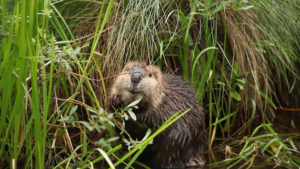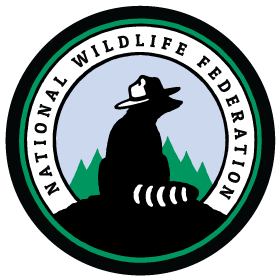Yesterday I remembered to write something about the Beaver Festival for the May issue of Mt. Diablo Audubon’s Quail newsletter. Perfect timing because it goes to press on Monday and yesterday National Wildlife Foundation Published this on their conservation blog
 We know that beavers are busy critters. They build habitat for fish and wildlife when they create natural structures in streams and rivers that slow down and spread out water. And this furry keystone species also builds resilience to climate change by improving water availability and water quality.
We know that beavers are busy critters. They build habitat for fish and wildlife when they create natural structures in streams and rivers that slow down and spread out water. And this furry keystone species also builds resilience to climate change by improving water availability and water quality.
In Montana, partners are discovering just how important beavers are for birds, too. The University of Montana’s Bird Ecology Lab in Missoula is documenting the differences in bird abundance and diversity in areas where beaver are active versus absent.
“Back in the 1950s, Ducks Unlimited recognized that beaver ponds are the key to waterfowl production across large parts of North America” -Anna Noson, avian ecologist with the Bird Lab.
Most of the research on the relationship between birds and beavers has focused on these areas, and is less documented in western states. But beavers may be even more important for creating bird habitat in the arid West.
Nice of you to notice! News Flash: They are. Just look at the bird life Martinez saw during the beaver decade compared to now. Where are those nesting green herons? Kingfishers?
 Wet areas comprise just 1-2% of the landscape in the western U.S. Yet more than 80% of all wildlife species depend on these “emerald isles” because they provide nutritious food, good hiding and breeding cover—and, of course, a water source. Ponds created by beavers are often the sole source of wetland habitat in dry states. In Montana, for instance, cavity nesting waterfowl like hooded mergansers, wood ducks and buffleheads are usually found breeding in beaver ponds.
Wet areas comprise just 1-2% of the landscape in the western U.S. Yet more than 80% of all wildlife species depend on these “emerald isles” because they provide nutritious food, good hiding and breeding cover—and, of course, a water source. Ponds created by beavers are often the sole source of wetland habitat in dry states. In Montana, for instance, cavity nesting waterfowl like hooded mergansers, wood ducks and buffleheads are usually found breeding in beaver ponds.
Unfortunately, the West has lost many of these precious wet spots.
“I’ve seen some numbers that say we’ve lost as much as 90% of our riparian habitat in the West,” says Noson.
Noson became interested in the importance of beavers back in 2004 while counting birds on small streams—“the kind you can jump over”—as part of a statewide stream survey effort. She compared the breeding bird community across three different types of stream reaches in southwest Montana: active beavers, inactive beavers (with evidence of old dams and wet meadows), and no beaver activity.
“In the areas without beavers, the riparian corridor was really just one willow plant wide. But the active beaver reaches were full of ponds ringed by wetland plants and shrubs,” says Noson.
The bird abundance and diversity increased exponentially in the streams with old or active beaver sites. Noson found eight species typically associated with wetland and riparian habitats, such as belted kingfishers and blue-winged teals, along with several at-risk species like the sandhill crane.
Why are birds flocking to beaver ponds?
“Where there’s slow water, there’s more food,” says Noson.
Beavers ponds generate a much higher density of biodiversity than fast-moving water. Ponded areas allow more plants to grow and more insects to breed in the water and in the surrounding soil. In turn, these plants and bugs bring in hungry birds.
Not to mention that the improved invertebrate community at beaver ponds becomes food for a his of things birds like to eat!
 Last year, Trout Unlimited asked the Bird Lab to help monitor Ninemile Creek, a stream in western Montana degraded from past mining activities that is now being restored. The goal is to document whether the restoration project benefits critters living alongside the creek as well as the fishing living inside the creek. Noson launched the monitoring project last May and June during birds’ breeding season. She set up counts along several different reaches, including a reference reach not impacted by mining with healthy habitat and plenty of beaver activity.
Last year, Trout Unlimited asked the Bird Lab to help monitor Ninemile Creek, a stream in western Montana degraded from past mining activities that is now being restored. The goal is to document whether the restoration project benefits critters living alongside the creek as well as the fishing living inside the creek. Noson launched the monitoring project last May and June during birds’ breeding season. She set up counts along several different reaches, including a reference reach not impacted by mining with healthy habitat and plenty of beaver activity.
“I found an incredible diversity of birds utilizing the many beaver ponds in the reference reach,” says Noson.
This included an assortment of neotropical migratory birds, like warblers and willow flycatchers. In contrast, Noson found only a handful of species in the mining-impacted reaches where beaver hadn’t moved in yet. Here, the creek was channelized with steep banks, no ponded habitat, and a much narrower strip of riparian vegetation. Most of the birds she counted were conifer-dependent species rather than waterfowl or migratory birds that rely on riparian habitat.
“There’s no question mark—more beavers equals more birds,” said Noson.
Noson plans to continue monitoring birds along Ninemile Creek as Trout Unlimited restores the stream and beavers move downstream. By reconnecting the floodplain to the creek, beavers will have access to more food sources (woody shrubs and trees) and more room to build dams. And as the beavers do their job, they’ll bring in more birds, too.
Did you get that? What do you know the exact same conclusion reached by Steve Zack and Hilary Cooke in their seminal paper on the subject 10 years ago. What do you know? Things that are true stay true and things that are lies stay false.
I loved the entire article but this was the part that really made me sit up and pay attention.
On April 17, National Wildlife Federation is co-hosting the world premiere of The Beaver Believers film at the International Wildlife Film Festival in Missoula, MT, along with a panel discussion on Beavers: The Great Climate Change Manipulators. More information here.
 The finished Beaver Believer film will premiere April 17th? Wow! That’s ten days away! It was nearly 6 years ago that Sarah Koenisberg and her merry band of student filmmakers came to the beaver festival. You might remember them doing lots of lots of this. Or filming the interview in my back yard.
The finished Beaver Believer film will premiere April 17th? Wow! That’s ten days away! It was nearly 6 years ago that Sarah Koenisberg and her merry band of student filmmakers came to the beaver festival. You might remember them doing lots of lots of this. Or filming the interview in my back yard.

A while back I got a call from Bob Boucher in Montana who had seen me on the film, been impressed and wanted to know if I thought that if he could direct funds to Sarah to finish the film it would get made.
Of course I said YES!
And here we are. I have written Sarah to ask for an update so stay tuned and we’ll see what unfolds. T minus ten days and counting! WIth Ben’s Goldfarb’s book, Sarah’s film and Ranger Rick’s may issue this is shaping up to be a very exciting year for beavers.
Watch this space.
The Beaver Believers TRAILER from Tensegrity Productions on Vimeo.








 This is an odd news day. There are two new articles on beavers that appear to be nobly motivated and they are both woefully deficient. I’m thinking they are both intended to mollify the crazy beaver lovers so that the serious people can continue trapping.
This is an odd news day. There are two new articles on beavers that appear to be nobly motivated and they are both woefully deficient. I’m thinking they are both intended to mollify the crazy beaver lovers so that the serious people can continue trapping. So no flow devices or culvert fences. No actual solutions just taking away the dam which you KNOW is going to be rebuilt. And then you can do what you always planned to do but call it a solution of last resort.
So no flow devices or culvert fences. No actual solutions just taking away the dam which you KNOW is going to be rebuilt. And then you can do what you always planned to do but call it a solution of last resort.
 It is called “1885′ but don’t be confused. That is its index number not the date. Of course you know why it was not made in 1885 don’t you?
It is called “1885′ but don’t be confused. That is its index number not the date. Of course you know why it was not made in 1885 don’t you?
 Now, onto more Sunday business.
Now, onto more Sunday business.


 We know that beavers are busy critters. They
We know that beavers are busy critters. They  Wet areas comprise just
Wet areas comprise just  Last year, Trout Unlimited asked the Bird Lab to help
Last year, Trout Unlimited asked the Bird Lab to help  The finished
The finished 
 Beavers are set to play a key role in water and flood management on an Essex estate. Judith Tooth reports.
Beavers are set to play a key role in water and flood management on an Essex estate. Judith Tooth reports.  Good for Archie. Have fun trying out beavers in Essex! We’re so impressed I won’t even make fun of your name, (which sounds a bit made up by someone who wanted to tease the British). The 7 hectare grounds at Spains hall were listed in the Doomsday book and owned by just three families since 1066.
Good for Archie. Have fun trying out beavers in Essex! We’re so impressed I won’t even make fun of your name, (which sounds a bit made up by someone who wanted to tease the British). The 7 hectare grounds at Spains hall were listed in the Doomsday book and owned by just three families since 1066. 



































